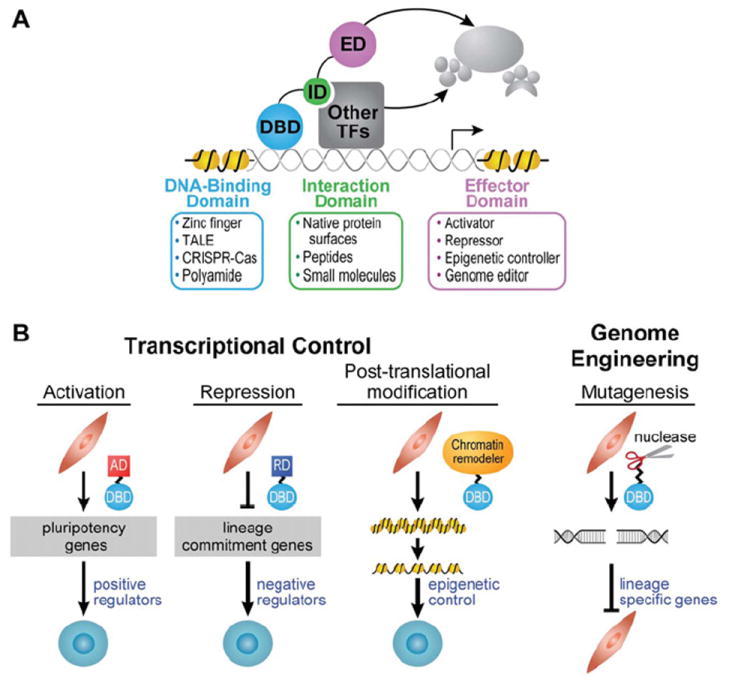Figure 1. Toolbox and modular design.

(A) Modularity of DNA-binding factors and small molecules. The DBD makes specific contacts with DNA and identifies preferred sites within the genome. An ID can be added to allow the molecule to partner with other proteins of interest. The ED provides the molecule with function. (B) Applications toward controlling gene networks. Regulatory control: a gene-activating ATF can positively regulate gene expression. Conversely, a gene-repressing ATF could negatively regulate its targets. A chromatin-remodelling enzyme fused to a DBD could reorganize the chromatin structure at specific loci where epigenetic control would have important effects in triggering the transcriptional circuitry for a particular phenotype. Genome engineering: attaching a nuclease domain to a DBD would enable genome editing for the purposes of altering transcriptional regulatory elements. In the Figure, reprogramming of fibroblasts to iPS cells is depicted; however, these versatile tools can be applied to a variety of biological contexts. AD, activation domain; RD, repression domain.
